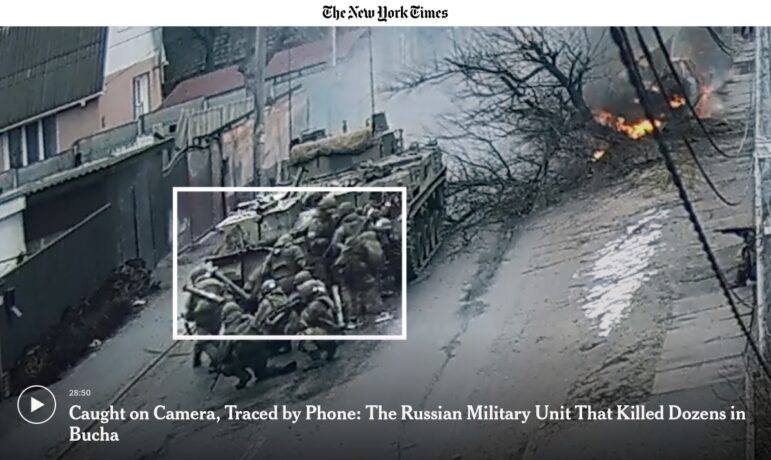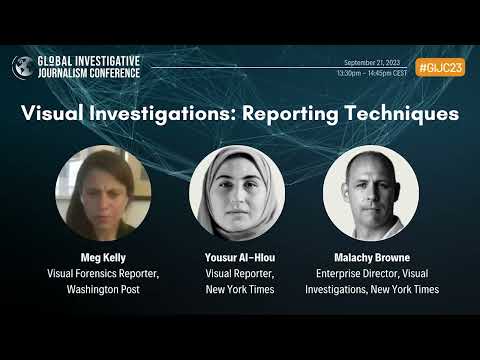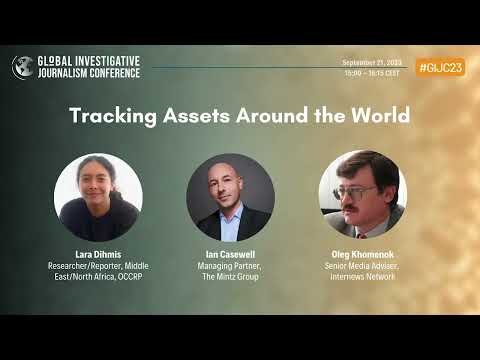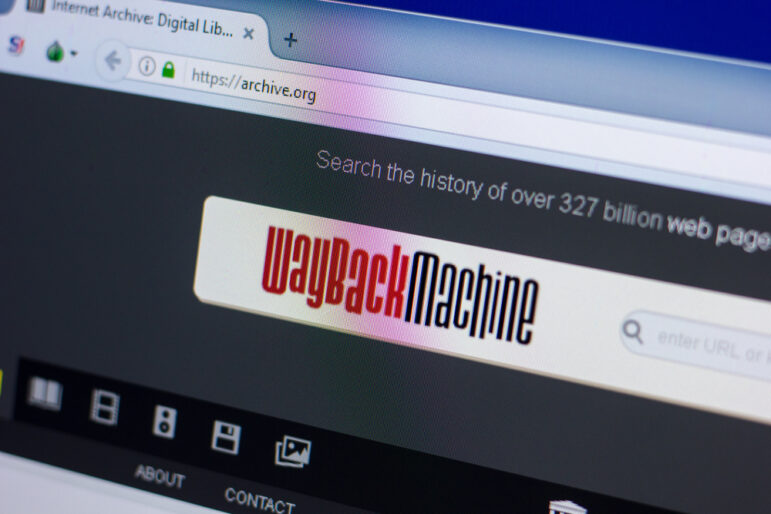

Image: Shutterstock
Best Practices for Investigating Culprits of War, Human Rights Abuses, and Other Conflict
Read this article in
Editor’s note: For a panel at IRE23 — the annual investigative journalism conference hosted by Investigative Reporters and Editors — GIJN senior reporter Rowan Philp presented favorite tips and tools he has gathered from dozens of reporters around the world on the subject of investigating human rights abuses and in conflict zones. The presentation generated significant interest from the IRE audience — so we are converting his presentation on these best practices into an article for the GIJN audience.
With little more than, say, a five-second social video clip of a refugee lying in a farmer’s field, you can find out what government was responsible for a civilian killing. In this case from 2020, investigators at Bellingcat used the direction of crop furrows beneath the man’s body, the length of the shadows, and the gap between the “crack” and “bang” of the gunshot to link the shooting of a Pakistani refugee to Greek security forces near the Turkish border.
As a reporter at GIJN, I’m lucky enough to interview leading investigative reporters and editors weekly on the techniques they use to dig into topics from surveillance to corruption and racial discrimination.
In this process, I have also interviewed several reporters who have dug deeply into harms, and unintended harms, caused by uniformed personnel in conflict and riot situations. These reporters shared the open source tools, casualty databases, and other tools they’ve found most effective in their investigations.
Looking at top-level investigations on this topic by major media in the past few years, what struck me was the value of trusting your gut: investing in the hunch or hypothesis that jumps out after you’ve seen initial information on some human rights abuse in conflict.
When they learned about the execution of a dozen civilians in Bucha, Ukraine, last year, the visual investigations team at The New York Times asked themselves: what would these soldiers have done next? What would a homesick 19-year-old Russian soldier do after murdering a civilian? Their theory was that those young soldiers would probably steal phones from the victims’ bodies, and make calls home. They realized that — if so — this phenomenon could leave digital breadcrumbs reporters could use to identify the military unit behind the atrocity.
The reporting team then traced calls from these phones to homes in Russia — calls made hours after the deaths of their owners — and used those numbers to find social media accounts. They then scrolled through the photos to find military insignia that helped confirm the identity of the unit involved in Bucha.

The New York Times visual investigations team asked themselves: What would a homesick 19-year-old Russian soldier do after killing a civilian? They guessed, correctly, that some would steal phones from their victims, and make calls home. Image: Screenshot, The New York Times
In 2018, investigative reporter Azmat Khan followed her instincts in a similar fashion: she wondered if the blatant biases and context errors she found in one Pentagon civilian casualty assessment report for northern Iraq might be common among air strike reports for the region. Later, she obtained more than 1,300 similar reports through public records requests, and told me how these revealed systemic mistakes that often led to lethal outcomes for civilians. Khan found confirmation bias everywhere, in statements like “We saw people opening gates — a known ISIS tactic,” and how decision-makers authorized strikes based on the fact that “no women or children were visible” in drone footage — ignoring the fact that the video was taken during the hottest time of the day. Her investigation revealed that civilians were killed in one in every five so-called “precision strikes” by coalition forces in the region.
Identifying culprits in these contexts is difficult because conflict and riot zones are chaotic and dangerous, and because casualty statistics are frequently “spun” by governments — but these examples show that investing in curiosity can break through the fog.
There are, of course, hundreds of great tools to dig into these harms — from online shadow calculators to timeline editing tools and vast dashboards for open source tools and databases to use in Africa.
But here is a short list of the most commonly-loved and/or new tools and techniques for this topic that emerged from my GIJN interview notebooks:
Remote Reporting on Conflict: Some Favorite Tools
- Follow four visual forensic steps. If you aren’t physically in the conflict zone, focus on a sequence for video evidence. Start with discovery (finding and archiving raw video) — and then work on verification, geolocation, and, finally, chronolocation (matching the sequence and time that events happen between video clips). Be organized.
- Use satellite evidence. Start with satellite images from Google Earth (and its date slider function) and Sentinel, and then, if needed, move to commercial providers for higher resolution images. For multiple sites, try Streamlit’s new Satellite Chips app, which scrapes coordinates and finds cropped sat images.
- Check crowdsourced mapping tools for context. Try Liveuamap, Open Street Map, and Wikimapia for local crowdsourced information on remote places.
- Consult trusted civilian casualty databases. The Airwars casualty watchdog database includes Arabic-language social media and NGO reports, and is increasingly trusted by reporters. Also, check out the Drone Wars database.
- Focus Google search with powerful Boolean operators. Even expert open source investigators start with basic syntax terms, like “AND,” “OR,” “site:,” and the minus sign, to narrow online searches and exclude major sites and names that otherwise overwhelm searches. In addition to more advanced “Google dorks,” one little-known trick that conflict reporters love is to insert the term “AROUND(16)” between two things you’re trying to connect, to see if they appear in documents separated by less than (in this case) 16 words.
- Check trusted political violence databases. These include the Armed Conflict Location and Event Data Project; the ACLED Conflict Severity Index; UCDP Conflict Encyclopedia; and WhoWasInCommand.com.
- Use proven tools to search Telegram. Experts say these sites provide great access to channels within Telegram — a social network often central to this topic: site:t.me/*, Tgstat, Telegago, and Junkipedia.
- Trace culprits with trusted facial recognition and photo analysis tools. Try tools like TinEye and Yandex.
- Be skeptical about conflict statistics. Check out “Sex, Drugs, and Body Counts: The Politics of Numbers in Global Crime and Conflict” — a book by researcher Kelly Greenhill.
- Use new databases and military magazines to track arms sales to strike incidents. The Security Force Monitor invites other newsrooms to follow its own methodology for exposing US weapons sales in human rights abuses in Yemen for their own investigations into Western arms sales to partner countries. Notably, they relied upon detailed information from military publications like AirForces Monthly, Times Aerospace, and Scramble, and opened their own database on US sales to the Saudi-Emirati coalition for any reporter to explore.
- Enable metadata functions for human rights abuse evidence. Ask war zone contributors, if possible, to enable their location phone functions for metadata. Also: trust and credit your fixer!
Tracking Shootings in Riots and Urban Locations
- Use the “geocode trick” for urban incidents. Pin the incident on Google Maps, right-click, and grab the longitude/latitude of the incident from the ‘What’s Here’ tab. Paste this into TweetDeck between “geocode:” and a radius (“,1mi”) to collect all social posts from that city block. If it doesn’t work at first, try deleting spaces in the chain.
- Use your stories to persuade stores and businesses to release security footage. Zoom in on Google Maps on the location of a violent incident, then call numbers for nearby stores or businesses that pop up on the tool, and ask store managers for their CCTV footage around the time of the incident. If they refuse (as many initially will), send them a copy of your first story on the incident the next day — and ask again. Experts say managers often change their minds.
- Use a powerful new free video archiving tool. Register for the new Bellingcat Auto Archiver tool, which automatically finds the best download strategy for each video URL. Otherwise, preserve video with third-party sites like Youtube-DL.
- Try the new “Crowdtangle-for-everything” social media scraping tool. While it does not yet have the most comprehensive datasets, the Junkipedia social monitoring tool has been built by journalists, for journalists — and can now scrape data from 12 platforms, including platforms that militias use, such as Telegram, GETTR, and Gab. Reporters can register for the tool via this link.
- Don’t forget unintended human rights abuses. Sometimes, security services genuinely don’t know that a procedure they use is causing civilian harm — so reporters can achieve immediate impact by revealing this fact to them, or their civilian masters. The New York Times achieved this impact in 2020 by finding that supposedly “non-lethal” pepper ball projectiles used by police in riots can lead to lethal outcomes.
Sneak Preview: GIJN’s Reporter’s Guide to Investigating War Crimes
GIJN will release a in-depth, 16-chapter Reporter’s Guide to Investigating War Crimes at the Global Investigative Journalism Conference 2023 (GIJC23) in Gothenburg, Sweden, this September. This guide will include tips and tools on sexual violence, banned and restricted weapons, genocide, forced disappearances, environment, and interviewing victims, and will offer tips on issues like unlawful deportation, hostages, human shields, and child soldiers.
Seven chapters have already been excerpted on GIJN’s website:
- Reporter’s Guide to Investigating War Crimes: Open Source Research
- Reporter’s Guide to Investigating War Crimes: Attacks on Civilians
- Reporter’s Guide to Investigating War Crimes: Combatants and Other Hostile Actors
- Reporter’s Guide to Investigating War Crimes: Banned and Restricted Weapons
- Reporter’s Guide to Investigating War Crimes: Conflict-Related Sexual Violence
- Reporter’s Guide to Investigating War Crimes: Genocide and Crimes Against Humanity
- Reporter’s Guide to Investigating War Crimes: Environmental and Property Crimes
 Rowan Philp is a senior reporter for GIJN. Rowan was formerly chief reporter for South Africa’s Sunday Times. As a foreign correspondent, he has reported on news, politics, corruption, and conflict from more than two dozen countries around the world.
Rowan Philp is a senior reporter for GIJN. Rowan was formerly chief reporter for South Africa’s Sunday Times. As a foreign correspondent, he has reported on news, politics, corruption, and conflict from more than two dozen countries around the world.









